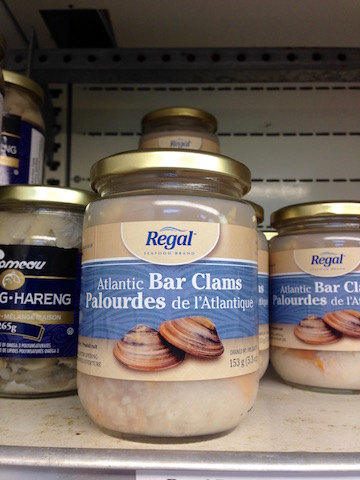Quick links
bar clam
DCHP-2 (Nov 2012)
n. — Atlantic Canada, Food, Fauna
a large clam with a corrugated shell found on underwater sandbars (see Image 1).
Type: 5. Frequency — The bar clam is also known as the Atlantic surf clam. The term bar clam is most prevalent in Canada when compared with other countries through internet domain searches (see Chart 1). Bar clam is listed in DPEIE and marked "common" (see DPEIE, s.v. "bar clam"). Casselman (1998: 57) also lists the term as from Prince Edward Island, though quotations demonstrate that the term is also used in other Maritime provinces, such as New Brunswick (see, e.g. the 2013 quotation).
See also COD-2, s.v. "bar clam", which is marked "Cdn".
See also COD-2, s.v. "bar clam", which is marked "Cdn".
Quotations
1977
He said three divers were involved in the project to search for bar clams [xxx]. Mr. Theriault asked how many bar clams were caught in 1975 [xxx].
1988
"Bar clams" are large, meaty ones, quahaugs they're similarly called. That is, the ones better used for clam chowder not for eating raw.
1994
[...] foods such as hominy corn soup and potato/bar clam chowder hark back to the days when Acadians fled to the remotest corners of the Maritimes to avoid deportation.
2002
U.S. market for bar clams drops out for P.E.I. fishermen: Island fishermen recently discovered that United States would only accept bar clams over five inches and Island bar clams seldom reach that size
References
- DPEIE
- COD-2
- Casselman (1998)
Images
